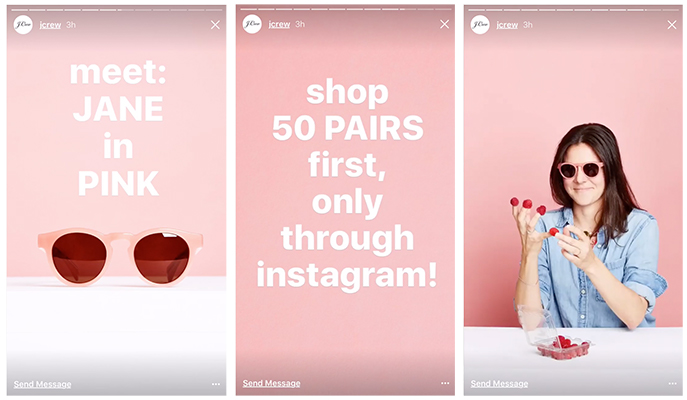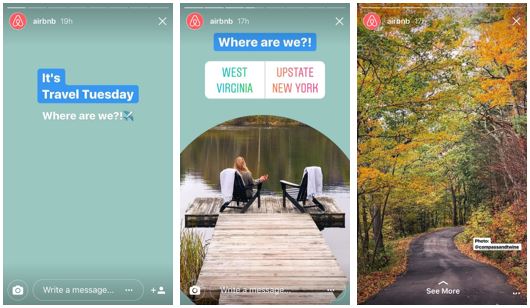
Since Instagram launched Stories in 2017 as a direct rival to Snapchat’s own Stories function, this format has seen exponential growth in popularity. So much so Facebook introduced its own version last year for fear of being left behind.
But what are Stories? And why are so many people responding to this type of content?
What follows is a basic guide for brands looking to exploit this serialised approach to engagement and message delivery.
What are Stories?
It doesn’t matter what platform you are looking at, Stories are the same on Snapchat, Instagram and Facebook. Individual posts tied together to create a coherent thread that can be used to convey a more complex narrative than individual posts allow for.
They are also ephemeral— i.e. temporary. Snapchat’s biggest selling point, along with the absence of mums and dads and the fact all posts are private, was the way content disappeared. Once gone, it’s gone. Stories extended that shelf life but only to 24-hours.
Both Facebook and Instagram Stories replicate this model. They live for a day, then vanish into the ether. And while that sounds limiting, from a brand perspective it’s a stroke of genius.
What’s the benefit of a post with a sell-by-date?
Consider the old days of broadcast, pre-on-demand. Viewing figures were through the roof for special episodes of soaps and national movie premieres, to give two examples. Today, the only time this really happens is with a live sports or (perhaps) reality show final.
Not that 3.2million UK viewers didn’t tune in to the last-ever Game of Thrones this month, which aired at 2AM.
Brands already know these broadcast events can be lucrative. In the US, Super Bowl adverts are so important agencies create entire campaigns just for that game. And the rise of social media-TV-hashtag shows how great engagement is possible when you tap into an audience sharing an experience simultaneously.
Facebook’s Live videos option is another case in point— read our guide to that format for more details.
This theory explains plenty about the success of Stories. You have to be present at the right moment, or thereabouts, to see the content. And those who are there want to engage with both producer and fellow audience members.
How should brands use Stories?
How long is a piece of string? There are multiple ways in which brands should be get involved with Stories. Some of the most popular are:
*Promotional sales, impromptu shows and exclusive exhibitions
One of the most obvious examples of brand Instagram Stories— or stories on any other network— gives the audience a sneak peak at a new product or line, or the chance to bag a bargain. Here today but not tomorrow, the consumer appeal is obvious.
[Embed J.Crew sunglasses example]
*Behind the scenes
Much like promotions and exclusive shows, behind the scenes is a great way to humanise a brand. People respond well to content that isn’t varnished or overly-polished, both of which imply big budget advertising. Give the audience a chance to see beyond the signed-off campaign and discover what’s really going on behind closed doors.

*Knowledge sharing and campaigning
They’re called Stories for a reason. By threading posts together you can deliver a lot of information and force people to pay attention. Staggering the details out in a way that means the audience has to tap the screen to see what’s next in order to understand the overall message sums up this approach.
*Polls, quizzes and competitions
The option to include interactive elements in Stories means many brands are driving engagement through polls, quizzes and competitions.
Air BnB’s #TravelTuesday posts regularly test followers’ knowledge of the world while inspiring trip ideas, and bookings..

When Meghan Markle married into the British Royal Family, Vanity Fair jumped at the chance to poll its fans in a fun but relevant way.










